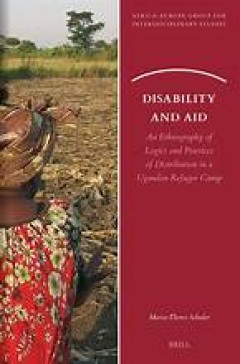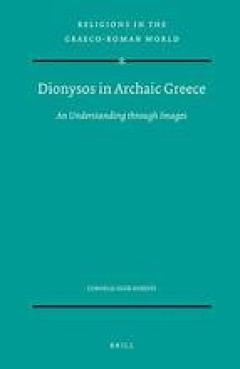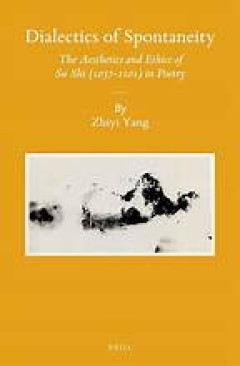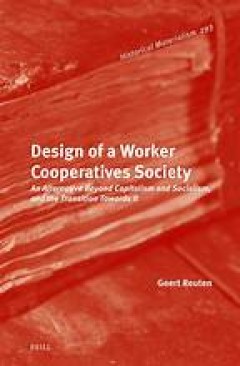Filter by

Discourses, Dialogue and Diversity in Biographical Research An Ecology of Li…
This book explores how narratives are deeply embodied, engaging heart, soul, as well as mind, through varying adult learner perspectives. Biographical research is not an isolated, individual, solipsistic endeavor but shaped by larger ecological interactions – in families, schools, universities, communities, societies, and networks – that can create or destroy hope. Telling or listening t…
- Edition
- -
- ISBN/ISSN
- 978-90-04-46590-9
- Collation
- oer.unej.ac.id
- Series Title
- Research on the Education and Learning of Adults, Volume: 10
- Call Number
- -

Discourses of Purity in Transcultural Perspective (300–1600)
While comparative studies on purity and impurity presented in the last decades have mostly concentrated on the ancient world or on modern developments, this volume focusses the hitherto comparatively neglected period between ca. 300 and 1600 c. E. The collection is innovative because it not only combines papers on both European and Asian cultures but also considers a wide variety of religions a…
- Edition
- -
- ISBN/ISSN
- 978-90-04-28975-8
- Collation
- oer.unej.ac.id
- Series Title
- Dynamics in the History of Religions, Volume: 7
- Call Number
- -

Discourses of Decline Essays on Republicanism in Honor of Wyger R.E. Velema
This volume explores the relevance of decline within the republican tradition. While scholarship on republicanism thrives, the idea of decline, which has been prominent in republican theory since antiquity, has received relatively little attention. The essays in this volume take a broad cultural perspective and study a wide variety of authors and (con)texts to situate decline among the key conc…
- Edition
- -
- ISBN/ISSN
- 978-90-04-47065-1
- Collation
- oer.unej.ac.id
- Series Title
- Studies in the History of Political Thought, Volume: 17
- Call Number
- -

Disability and Aid An Ethnography of Logics and Practices of Distribution in…
*The open access publication of this book has been published with the support of the Swiss National Science Foundation*
- Edition
- -
- ISBN/ISSN
- 978-90-04-68302-0
- Collation
- oer.unej.ac.id
- Series Title
- Africa-Europe Group for Interdisciplinary Studies, Volume: 32
- Call Number
- -

Dionysos in Classical Athens An Understanding through Images
Dionysos, with his following of satyrs and women, was a major theme in a big part of the figure painted pottery in 500-300 B.C. Athens. As an original testimonial of their time, the imagery on these vases convey what this god meant to his worshippers. It becomes clear that - contrary to what is usually assumed - he was not only appropriate for wine, wine indulgence, ecstasy and theatre. Rather,…
- Edition
- -
- ISBN/ISSN
- 978-90-04-27012-1
- Collation
- oer.unej.ac.id
- Series Title
- Religions in the Graeco-Roman World, Volume: 181
- Call Number
- -

Dionysos in Archaic Greece An Understanding through Images
For the Greek, Dionysos was a very important god: for individuals as well as for the community as a whole. As there are only a few written sources dating from before the 5th Century BC the many images of Dionysos on Greek vases may well offer a genuine approach to the meaning given by the ancient viewer. This book explores the earliest images followed by those on small vases for private use, o…
- Edition
- -
- ISBN/ISSN
- 978-90-47-41882-5
- Collation
- oer.unej.ac.id
- Series Title
- Religions in the Graeco-Roman World, Volume: 160
- Call Number
- -

Dice and Gods on the Silk Road
What do dice and gods have in common? What is the relationship between dice divination and dice gambling? This interdisciplinary collaboration situates the tenth-century Chinese Buddhist “Divination of Maheśvara” within a deep Chinese backstory of divination with dice and numbers going back to at least the 4th century BCE. Simultaneously, the authors track this specific method of dice divi…
- Edition
- -
- ISBN/ISSN
- 978-90-04-46437-7
- Collation
- oer.unej.ac.id
- Series Title
- Prognostication in History, Volume: 7
- Call Number
- -

Dialectics of Spontaneity
In Dialectics of Spontaneity, Zhiyi Yang examines Su Shi’s poetry on art and connoisseurship, his emulation of Tao Qian in exile poetry, and his inner alchemical practice. She argues that the concept of absolute spontaneity is defined negatively, and artistic and ethical spontaneity which can be actualized must be provisional and conditioned. This book argues that Su Shi’s lyrical person…
- Edition
- -
- ISBN/ISSN
- 978-90-04-29853-8
- Collation
- oer.unej.ac.id
- Series Title
- Sinica Leidensia, Volume: 122
- Call Number
- -

Devotional Portraiture and Spiritual Experience in Early Netherlandish Painti…
This is the first exhaustive catalogue of paintings with devotional portraits produced in the Low Countries between c. 1400 and 1550. This catalogue is an appendix to the book
- Edition
- -
- ISBN/ISSN
- 978-90-04-40973-6
- Collation
- oer.unej.ac.id
- Series Title
- Brill's Studies in Intellectual History, olume: 299/38 Brill's Studies on Art, Art History, and Intellectual History, Volume: 299/38
- Call Number
- -

Design of a Worker Cooperatives Society
What would an alternative to contemporary capitalism look like? In this book, Geert Reuten sets out a detailed design of a democratic society organised in worker cooperatives, followed by an equally detailed democratic transition to it, thereby making a convincing case. In Reuten’s design, Workers constitute the single economic class. However, unlike in capitalism, there is no class that owns…
- Edition
- -
- ISBN/ISSN
- 978-90-04-53108-6
- Collation
- oer.unej.ac.id
- Series Title
- Historical Materialism Book Series, Volume: 293
- Call Number
- -
 Computer Science, Information & General Works
Computer Science, Information & General Works  Philosophy & Psychology
Philosophy & Psychology  Religion
Religion  Social Sciences
Social Sciences  Language
Language  Pure Science
Pure Science  Applied Sciences
Applied Sciences  Art & Recreation
Art & Recreation  Literature
Literature  History & Geography
History & Geography